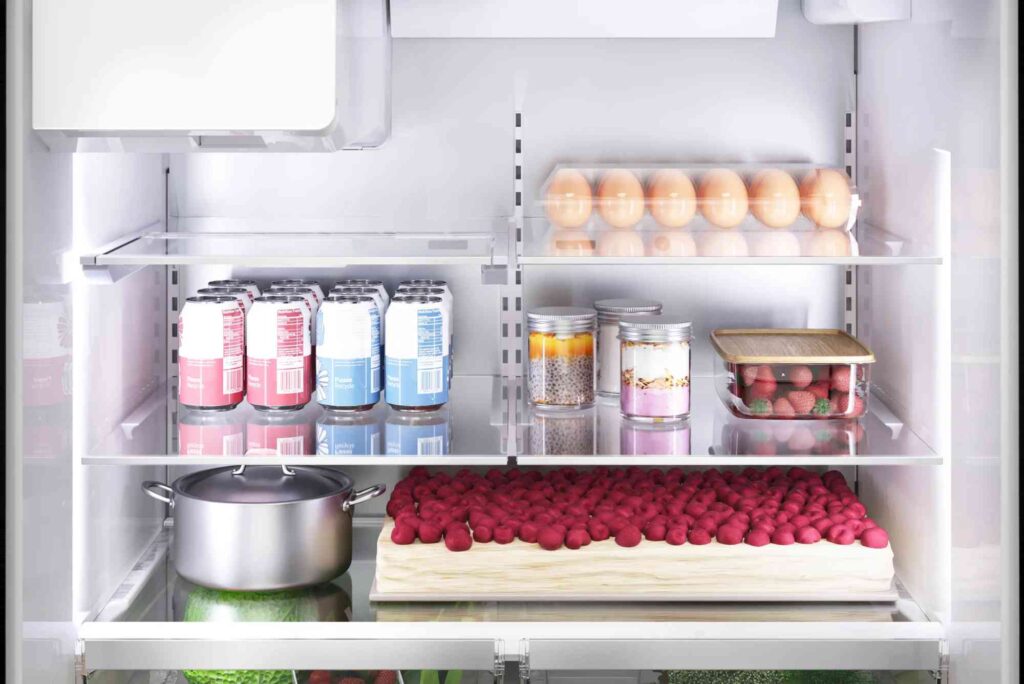How to Handle Frequent Refrigerator Cycling: Expert Tips
Frequent cycling in refrigerators is a common issue that many homeowners face. Understanding what causes this behavior and how to manage it is crucial to maintaining a fully functioning fridge. In this blog, we will dive into the causes of frequent refrigerator cycling and provide a step-by-step guide to troubleshoot and fix this issue. Whether you’re looking to perform basic checks yourself or need professional help, this guide has everything you need.
What is Refrigerator Cycling?
Refrigerator cycling refers to the process where the appliance’s compressor frequently turns on and off, seemingly without any pattern or reason. This can lead to inconsistent cooling, which can affect the overall performance of the fridge. While some cycling is normal, especially in newer models, excessive cycling could indicate a potential problem.
Understanding the common causes and knowing when to call for professional help can save you from wasting energy and prolong the life of your refrigerator.
Causes of Frequent Refrigerator Cycling
There are several reasons why a refrigerator might cycle more frequently than usual. Let’s look at the most common causes:

Temperature Settings
One of the easiest things to check is the refrigerator’s temperature setting. If the temperature is set too low, the appliance will work harder than necessary, causing the compressor to cycle frequently. Conversely, if the setting is too high, it might not keep food cool enough.
Dirty Condenser Coils
Condenser coils help dissipate heat from the refrigerator. If they are covered with dust or debris, they cannot function properly, causing the compressor to work harder and cycle more often. Regularly cleaning these coils is essential to maintaining your fridge’s efficiency.
Damaged Door Seal
If the door seal is cracked or dirty, cold air can escape, and warm air can enter the refrigerator. This forces the appliance to work overtime to maintain the desired temperature, causing frequent cycling. Inspect the door seal regularly and clean or replace it as needed.
Malfunctioning Thermostat
The thermostat is responsible for regulating the refrigerator’s temperature. If it’s not functioning properly, it may send incorrect signals to the compressor, causing it to cycle excessively. A malfunctioning thermostat needs to be replaced to prevent this problem.
Faulty Start Relay
The start relay helps the compressor get going. If it is faulty, it might not engage correctly, causing the compressor to turn on and off erratically. Replacing a faulty start relay is usually a simple fix but should be handled by a professional.
Compressor Issues
The compressor is the heart of the refrigerator’s cooling system. If the compressor is failing, it might cause erratic cycling. This is a serious issue that typically requires a professional refrigerator repair.
How to Fix Frequent Refrigerator Cycling: Step-by-Step Guide
If you’re dealing with frequent refrigerator cycling, follow these steps to troubleshoot and potentially fix the problem. If you’re not comfortable performing these steps yourself, it’s a good idea to contact a professional like Refrigerator Repair Dubai.
Check the Temperature Setting
Start by checking the refrigerator’s temperature settings. Make sure the fridge is set to the manufacturer’s recommended temperature (usually around 37°F or 3°C) and the freezer is set to 0°F (-18°C). If the temperature is too low, adjust it to a moderate level and observe whether the cycling improves.
Clean the Condenser Coils
Next, inspect and clean the condenser coils. These are typically located at the back or beneath the refrigerator. Use a vacuum or a brush to remove dust, dirt, and debris. A clean set of coils will help the refrigerator run efficiently and prevent frequent cycling.
Inspect the Door Seal
Check the door seal for any cracks, tears, or debris. A damaged seal can prevent the refrigerator from maintaining the correct temperature, leading to excessive cycling. Wipe down the seal with warm water and a mild detergent to clean it. If the seal is damaged, consider replacing it.
Test the Thermostat
If cleaning the coils and inspecting the door seal don’t solve the problem, the thermostat may be malfunctioning. You can test the thermostat by setting it to a lower temperature and observing if the compressor kicks on. If the compressor doesn’t start as expected or the fridge keeps cycling, the thermostat might need replacement.
Check the Start Relay
To test the start relay, unplug the refrigerator and remove the relay from the compressor. Use a multimeter to check for continuity. If there’s no continuity, the start relay is faulty and needs replacement. It’s best to hire a professional to replace this component.
Consult a Professional for Compressor Issues
If none of the above steps resolve the issue, the compressor itself might be malfunctioning. Compressor issues are often complicated and expensive to fix. If you suspect that the compressor is the problem, it’s time to call a professional. A reliable service like Az Repair Dubai can provide expert assistance.
When to Call for Professional Help
If you’ve gone through the troubleshooting steps and the refrigerator continues to cycle frequently, it’s time to contact a professional repair service. Professionals can diagnose and fix more complex issues, such as a failing compressor or faulty start relay, to ensure your refrigerator runs smoothly.
Az Repair Location provides refrigerator repair services in your area. Their team of experienced technicians will assess the issue and recommend the best solution for your appliance.
Related FAQs: Answering Your Questions About Refrigerator Cycling
Why does my refrigerator keep turning on and off?
There are several potential reasons for this, including incorrect temperature settings, dirty condenser coils, or a faulty thermostat. Follow the troubleshooting steps above to identify the issue.
Is it normal for my refrigerator to cycle?
Yes, it’s normal for a refrigerator to cycle on and off as it maintains the temperature. However, if the cycling is too frequent, it could be a sign of an underlying issue.
How can I prevent my refrigerator from cycling too much?
Regular maintenance, such as cleaning the coils and ensuring the door seal is intact, can help reduce excessive cycling. Additionally, check the temperature settings to ensure they are within the recommended range.
How long does a refrigerator cycle last?
On average, a refrigerator’s cycle lasts anywhere from 15 to 20 minutes. If the cycling duration is much shorter or longer, it might indicate a problem.
Should I attempt to fix my refrigerator myself?
While basic maintenance tasks like cleaning the coils can be done by yourself, it’s best to call a professional for more complicated issues like thermostat or compressor problems.



